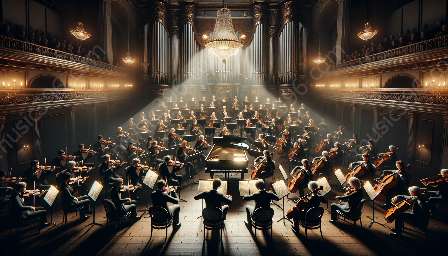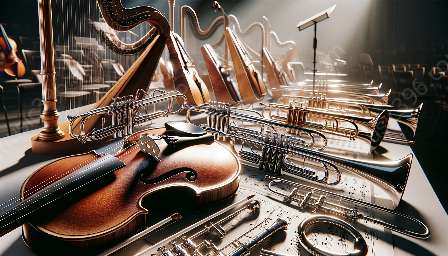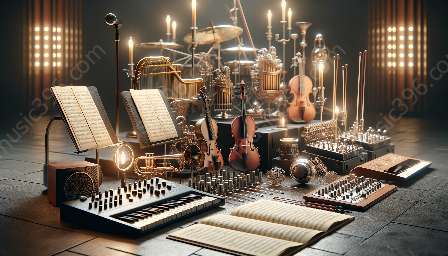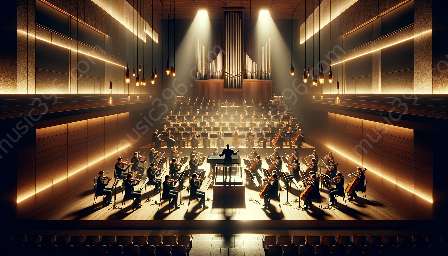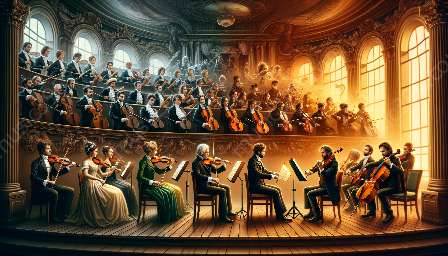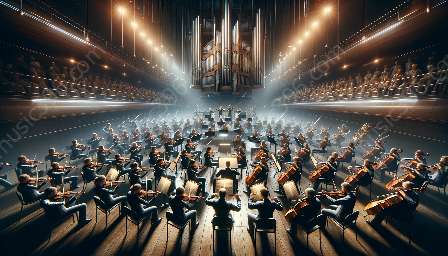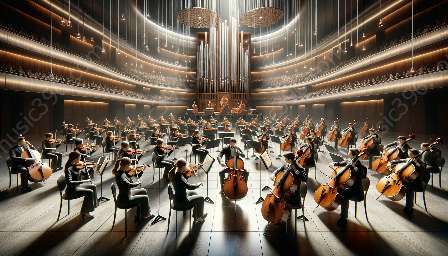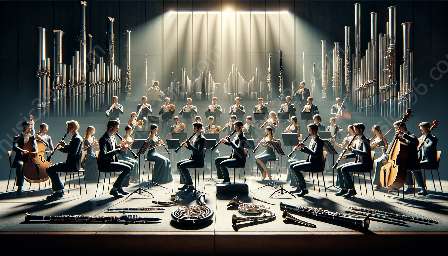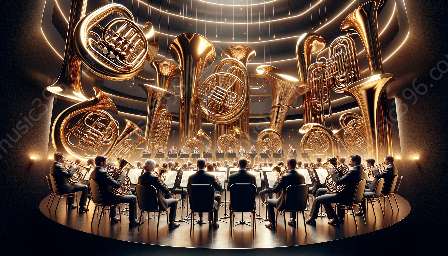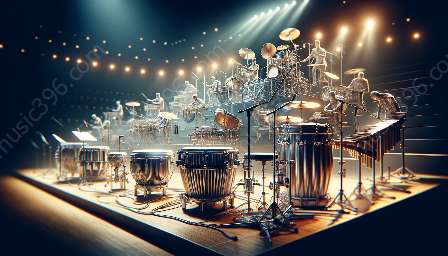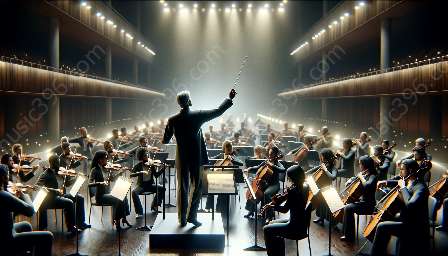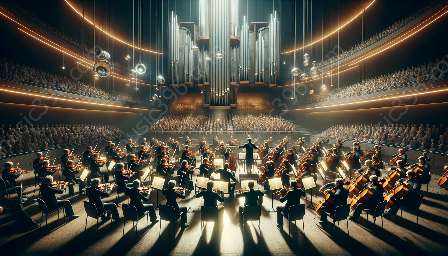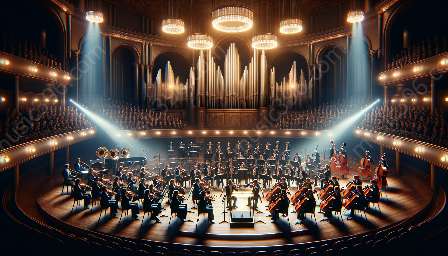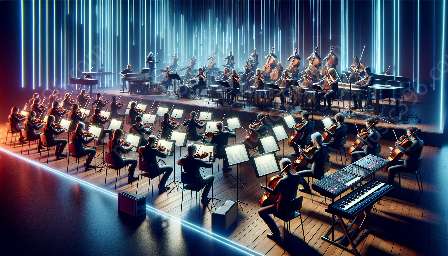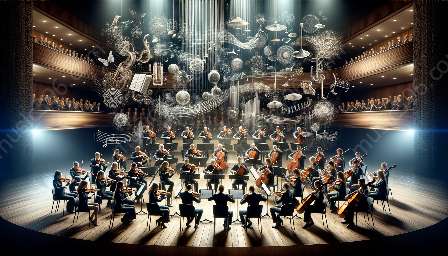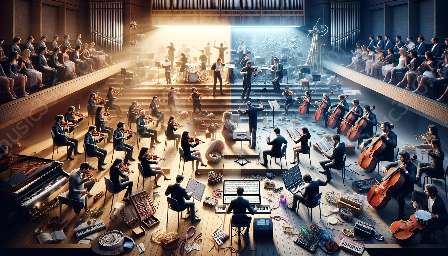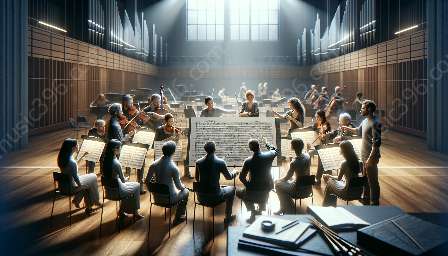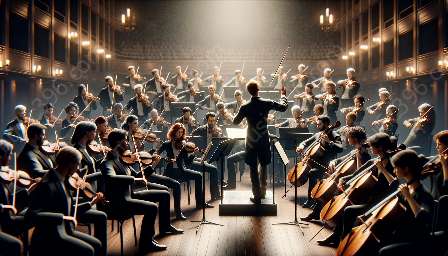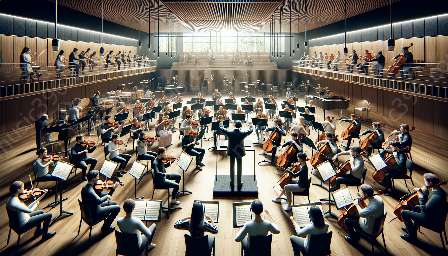Orchestral conducting is a transformative art form that plays a crucial role in bringing musical compositions to life. This topic cluster explores the multifaceted domain of orchestral conducting, shedding light on its connection to orchestration and its impact on the world of music and audio.
Understanding Orchestral Conducting
Orchestral conducting is the art of leading and directing an ensemble of musicians through a musical piece. It involves communicating musical intentions to the orchestra, shaping the sound, interpreting the score, and guiding the performance with gestures and expressions. The conductor acts as the bridge between the composer's vision and the orchestra's interpretation, wielding profound influence over the musical outcome.
The Conductor's Role
The orchestral conductor holds a position of immense responsibility, serving as the artistic and interpretive leader of the ensemble. Beyond merely setting the tempo, the conductor communicates the emotional and dramatic content of the music, shapes the overall interpretation, and ensures cohesion among the musicians.
Techniques and Gestures
Conductors employ a wide array of techniques and gestures to convey their interpretive ideas to the orchestra. From subtle nuanced movements to sweeping gestures, each conductor brings a unique style to their craft. They use hand movements, facial expressions, and eye contact to communicate with the musicians, guiding them through complex musical passages and transitions.
Relationship with Orchestration
Orchestration, the art of arranging and orchestrating musical compositions, is intimately connected with orchestral conducting. Conductors must have a deep understanding of orchestration, as they must guide the musicians in bringing out the nuances, dynamics, and colors inherent in the orchestral score. Their knowledge of instrumentation, tone colors, and balance is essential in crafting a compelling and cohesive musical interpretation.
Orchestral Conducting and the World of Music and Audio
Orchestral conducting extends its influence beyond the concert hall, making an impact on the broader world of music and audio. Conductors shape interpretations that are immortalized in recordings, collaborate with composers and music producers, and inspire future generations of musicians and conductors.
Recording and Production
Conductors play a pivotal role in the recording and production of orchestral performances. Their ability to create a unified and evocative interpretation directly influences the quality and emotive power of recordings. They work closely with audio engineers and producers to capture the essence of the live performance and bring it to audiences worldwide.
Educational Contributions
Orchestral conductors contribute significantly to music education by mentoring aspiring musicians and conductors. Through workshops, masterclasses, and educational programs, they impart their knowledge, experience, and passion for music, nurturing the next generation of performers and leaders in the field.
Cultural Impact
Conductors are influential cultural figures, shaping the repertoire, programming, and public perception of orchestral music. Their artistic vision and advocacy for diverse and innovative musical works contribute to the vibrancy and relevance of orchestral music in contemporary society.
Conclusion
Orchestral conducting is a complex and profound art form that enriches the world of music and audio. Its synergy with orchestration, its impact on recordings and productions, and its enduring influence on music education and cultural enrichment solidify its significance in the musical landscape. Understanding the art of orchestral conducting illuminates the power of interpretation, communication, and collaboration in the realm of orchestral music.
Topic
Interpretation and communication of musical phrasing
View details
Leadership and mentorship in orchestral conducting
View details
Rehearsal strategies for effective ensemble playing
View details
Physical and mental demands of orchestral conducting
View details
Conductor's role in shaping musical interpretation
View details
Collaborative process in orchestral performances
View details
Cultural and historical influences on conducting practices
View details
Creative expression and artistic development in orchestral conducting
View details
Contemporary issues and challenges in orchestral conducting
View details
Orchestral conducting and musical forms and structures
View details
Conducting techniques for specific musical periods
View details
Balancing sound and dynamics in orchestral ensemble
View details
Inclusive and supportive environment in orchestra interactions
View details
Conducting classical and romantic orchestral works
View details
Conductor's artistic interpretation and expression
View details
Conducting Baroque and Renaissance musical compositions
View details
Conducting techniques for contemporary and experimental works
View details
Conductor's use of feedback and guidance for orchestra members
View details
Conductor's well-being and personal development
View details
Conductor's interaction with composers and orchestral management
View details
Conducting techniques for intuitive and creative interpretations
View details
Conductor's preparation for rehearsals and performances
View details
Conductor's use of video and audio recordings for self-assessment
View details
Conductor's skills and qualities for effective orchestral conducting
View details
Future trends and innovations in orchestral conducting
View details
Questions
What are the fundamental conducting patterns for 4/4 time signature?
View details
How can a conductor effectively communicate tempo changes to the orchestra?
View details
What are the different styles of baton technique and their historical significance?
View details
Explain the role of the conductor in shaping the interpretation of a musical piece.
View details
How does a conductor convey musical phrasing and dynamics to the orchestra?
View details
What strategies can a conductor use to unify ensemble playing and ensure cohesion?
View details
How does a conductor prepare for rehearsals and performances with an orchestra?
View details
What are the essential skills and qualities required for effective orchestral conducting?
View details
What techniques can a conductor use to facilitate effective communication and rapport with orchestra members?
View details
Discuss the historical development of orchestral conducting and its prominent figures.
View details
How does a conductor interpret and convey the composer's intentions to the musicians?
View details
What are the challenges and responsibilities of conducting a large-scale orchestral work?
View details
Explain the importance of score study and analysis for conductors.
View details
How can a conductor provide constructive feedback and guidance to orchestra members?
View details
Discuss the relationship between orchestral conducting and the study of musical forms and structures.
View details
What are the considerations for balancing the sound and dynamics of a full orchestral ensemble?
View details
Explain the role of non-verbal cues and gestures in orchestral conducting.
View details
How does a conductor manage and resolve conflicts within the orchestra?
View details
Discuss the influence of cultural and historical context on conducting practices and interpretations of musical works.
View details
What are the ethical considerations for conductors in their interactions with composers, musicians, and orchestral management?
View details
How can a conductor effectively lead rehearsals to maximize productivity and artistic development?
View details
Explain the use of video and audio recordings for self-assessment and improvement as a conductor.
View details
What are the physical and mental demands of orchestral conducting, and how can conductors maintain their well-being?
View details
Describe the collaborative process between conductors and guest soloists in orchestral performances.
View details
Discuss the impact of technology on contemporary conducting practices and performance enhancement.
View details
How does orchestral conducting contribute to the understanding and appreciation of different musical traditions and genres?
View details
Explain the historical context and development of conducting techniques for specific musical periods, such as Baroque, Classical, and Romantic.
View details
What strategies can conductors employ to encourage creativity and artistic expression within the orchestra?
View details
Discuss the challenges and rewards of conducting contemporary or experimental musical compositions.
View details
How can conductors facilitate a supportive and inclusive environment in their interactions with orchestra members?
View details
Explain the significance of leadership and mentorship in the development of aspiring conductors.
View details
What are the implications of conductor's artistic interpretation and expression on the overall musical experience for audiences?
View details
Discuss the future trends and innovations in orchestral conducting and their potential impact on the music industry.
View details

